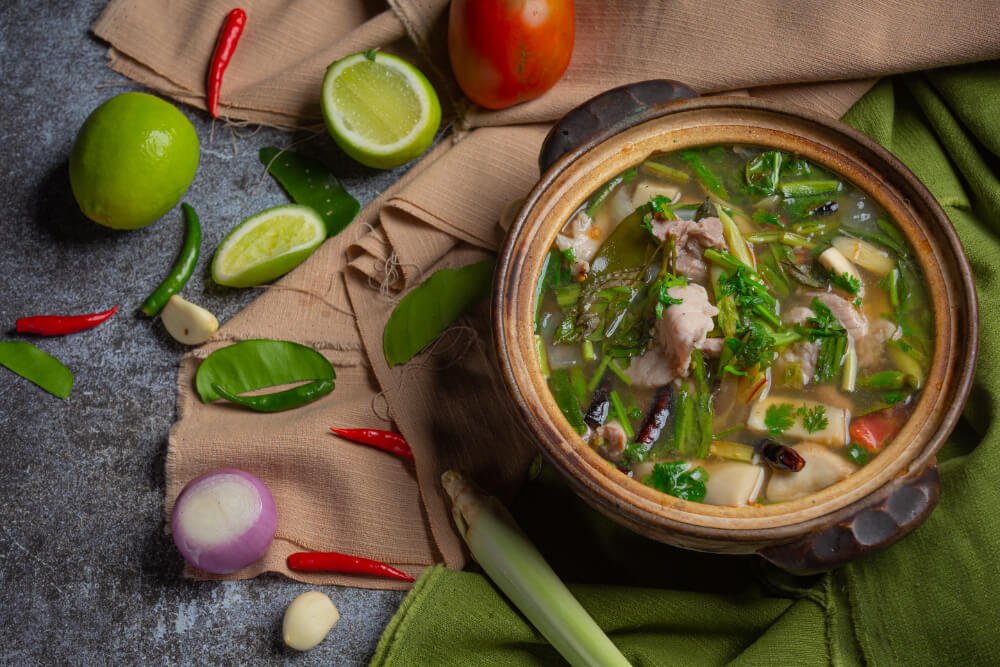What is Sinigang

Sinigang is a traditional Filipino soup or stew characterized by its distinct sour flavor, often achieved using tamarind, tomatoes, or other natural souring agents. It is a staple in Filipino cuisine and holds a special place in the hearts of many, often evoking a sense of nostalgia and comfort.
History of Sinigang
While the exact origins of Sinigang are not definitively documented, the dish is deeply rooted in Filipino culinary tradition. Its prevalence across various regions of the Philippines highlights local variations that showcase regional ingredients. Historically, the souring agents varied depending on what was locally available, such as green mangoes, calamansi, or batwan. Today, tamarind is among the most popular choices, giving Sinigang its iconic tangy taste.
Cooking Sinigang traditionally involved simmering meat or seafood with vegetables and the chosen souring agent until the flavors melded together perfectly. The dish reflects the diverse agricultural produce of the Philippines and its people’s adaptability in utilizing available resources to create flavorful, satisfying meals.
Variants of Sinigang
Throughout the Philippines, Sinigang is prepared in various ways based on regional preferences. Common variants include: Throughout the Philippines, Sinigang is prepared in various ways based on regional preferences. Common variants include Sinigang na Baboy, which uses pork as the main meat, and Sinigang na Isda, featuring fish like bangus or tilapia. Additionally, some regions may incorporate local ingredients, such as green mango or tamarind, to enhance the dish’s flavor. As a unique cultural touchstone, many people enjoy discussing its significance in Filipino cuisine, often wondering, what does tabing ilog mean, as it reflects the importance of social gatherings by the river, where families often come together to enjoy this beloved sour soup.
- Sinigang na Baboy – Pork Sinigang
- Sinigang na Hipon – Shrimp Sinigang
- Sinigang na Isda – Fish Sinigang
- Sinigang na Baka – Beef Sinigang
- Sinigang na Bayabas – Sinigang cooked with guava
Frequently Asked Questions
- What is the primary souring agent used in Sinigang?
Sinigang is commonly soured using tamarind, but other fruits like green mangoes, calamansi, or tomatoes can also be used. - Is Sinigang considered healthy?
Yes, Sinigang is often rich in vegetables and lean protein, making it a nutritious choice. - Can Sinigang be vegetarian?
Yes, Sinigang can be adapted to suit a vegetarian diet by omitting meat and using tofu or mushrooms instead. - What are typical vegetables included in Sinigang?
Common vegetables include kangkong (water spinach), radish, okra, eggplant, and tomatoes. - How is Sinigang traditionally served?
Sinigang is typically served hot, often enjoyed with a side of steamed white rice.

